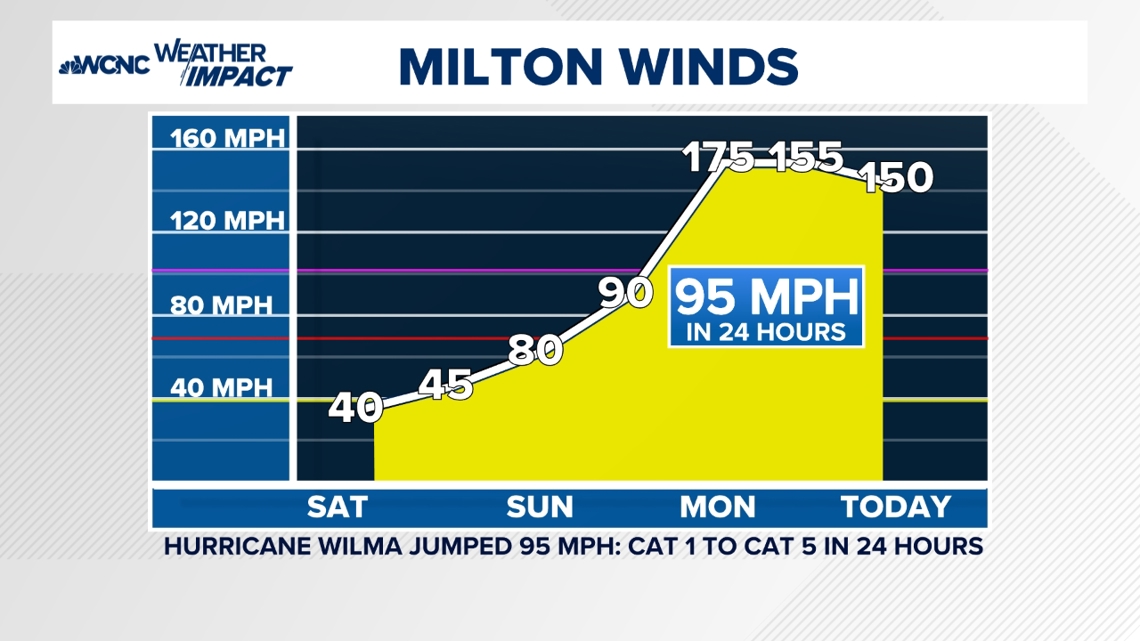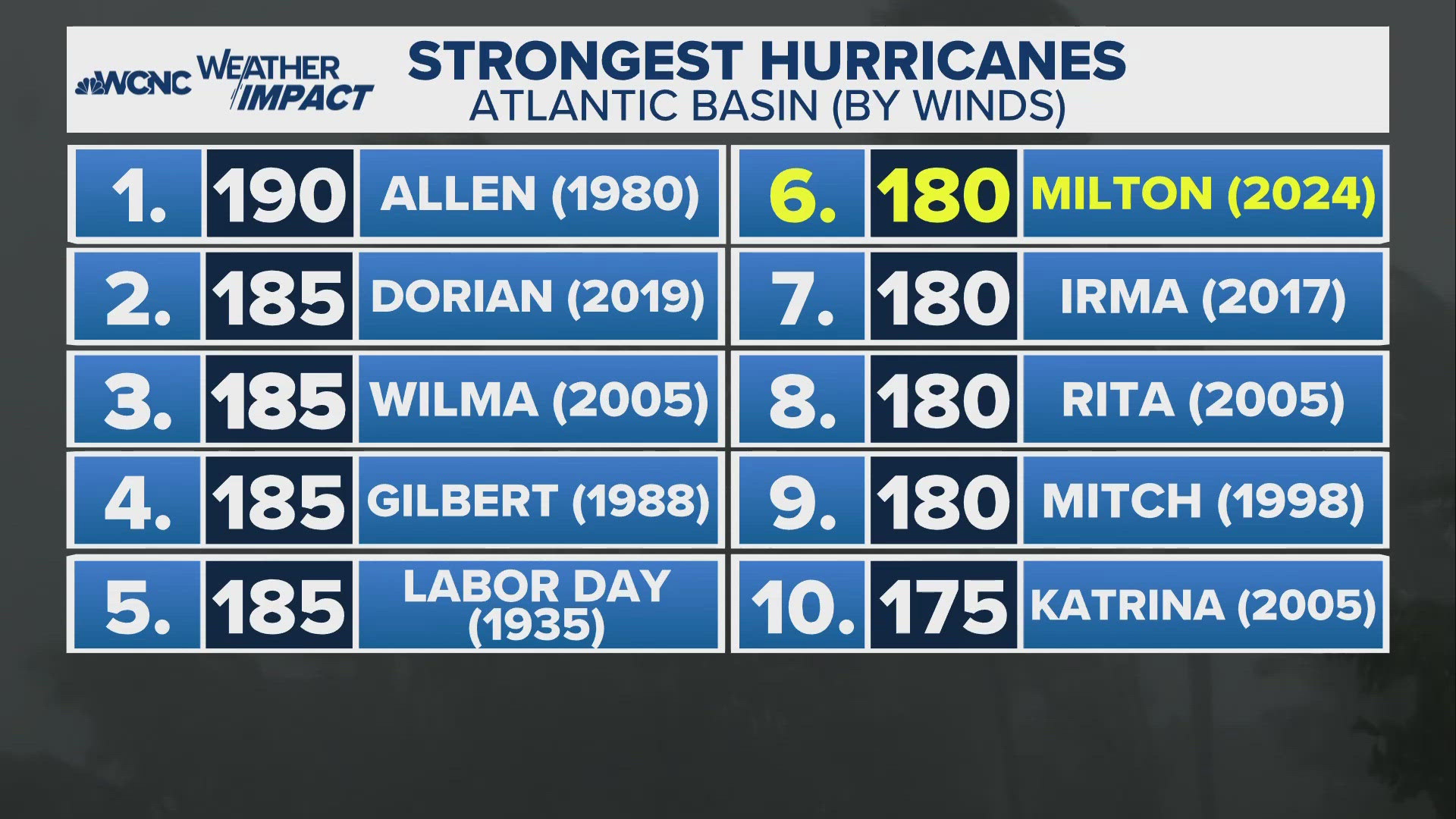TAMPA, Fla. — Hurricane Milton remains a ferocious storm that could land a once-in-a-century direct hit on Tampa and St. Petersburg, engulfing the populous region with towering storm surges and turning debris from Helene’s devastation 12 days ago into projectiles.
Hurricane Milton's records
Hurricane Milton is expected to make landfall on Florida's Gulf Coast Wednesday night but it was on Monday that the storm broke into the history books.
On Monday, Milton became the fastest-growing hurricane in history. The process is called "rapid intensification." By definition, this term applies to any tropical cyclone that experiences an increase of maximum sustained winds by at least 35 mph within 24 hours.
In July, Hurricane Beryl intensified 60 mph within a day. Milton jumped 95 mph within 24 hours. Milton's intensification is tied with Hurricane Wilma, which in 2005 set the record for the most significant rapid intensification of any cyclone in the Atlantic Ocean, Gulf of Mexico or Caribbean Sea.


Strongest hurricane records
Strongest winds
When trying to determine the strongest hurricane on record, there are different attributes to consider.
Strictly on winds, Hurricane Allen owns the top spot peaking at 190 mph. That record was set 44 years ago in 1980.
The wind is the same attribute used to judge a storm on the Saffir-Simpson Hurricane Wind Scale, which is used to determine a storm's category.
RAISE YOUR WEATHER IQ: Inside the powerful winds of a hurricane
Lowest barometric pressure
Air pressure is another way to view a storm's strength.
Hurricane Wilma dropped to an unprecedented 883 mb, the lowest in the Atlantic Basin Hurricane Season history. Milton wasn't far off, only the sixth hurricane on record to drop below 900 MB.
Measure in millibars, pressure is commonly used in aviation and meteorology. At sea level, the standard air pressure in millibars is 1013.2. The lower the number, the more intense the storm.


Milton's historic and unique path:
It is rare to have a hurricane form in the western Gulf of Mexico and move eastward ahead of landfall. It has happened before but impacting the Tampa-St. Petersburg-Clearwater metro area is even rarer. This has only happened twice. Both occurrences occurred during the 1800s. Those storms were only a tropical storm and a Category 1 hurricane.
Hurricane Milton is being referred to as the worst hurricane in over a hundred years for Tampa.
The 'Forgotten Nightmare' of Oct. 25, 1921, Tampa Bay had an estimated 11-foot storm surge. Water surged into downtown Tampa. Ships were smashed while others sank or were beached.
Near landfall in Tarpon Springs, the storm was considered Category 3 with estimated winds at 120 mph. Power poles and trees were down across the area with hundreds of homes destroyed.
This storm of 1921 took eight lives and caused an estimated $10 million in damage. In 2024 dollars, that would be equivalent to $176 million.
Now 103 years later, Milton is headed for the same, yet much more populated, area of Florida. In 1921, the Tampa-St.Petersburg-Clearwater, Florida metro area had a population of around 117,000. That population today is over 3.3 million That’s 28 times more people than a century ago!
The Tampa area's low-lying topography makes it susceptible to storm surges and flooding. Helene scraped by and caused a 7.8-foot storm surge. Milton will be a direct hit. This rare path is expected to bring a potential historic 10-to-15-foot storm surge.
Contact Chris Mulcahy at cmulcahy@wcnc.com and follow him on Facebook, X, Instagram and TikTok.

